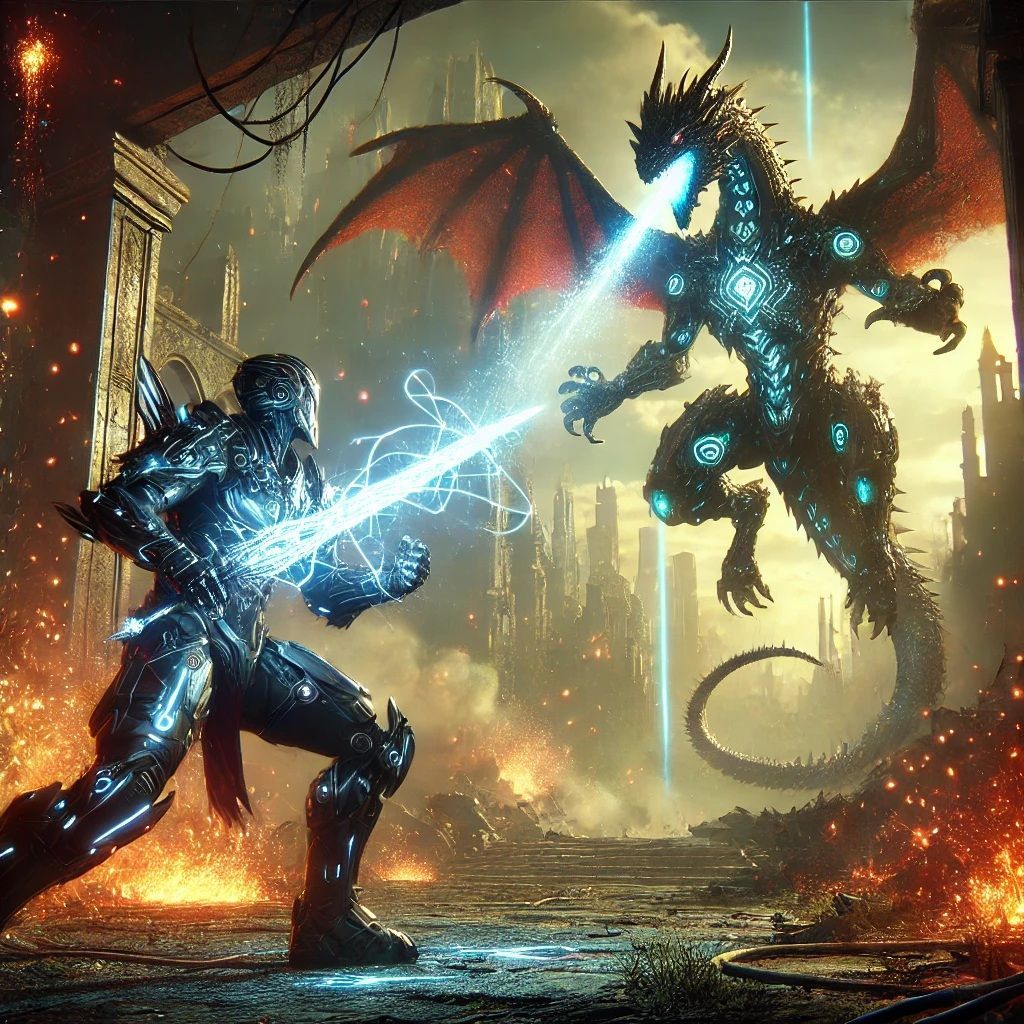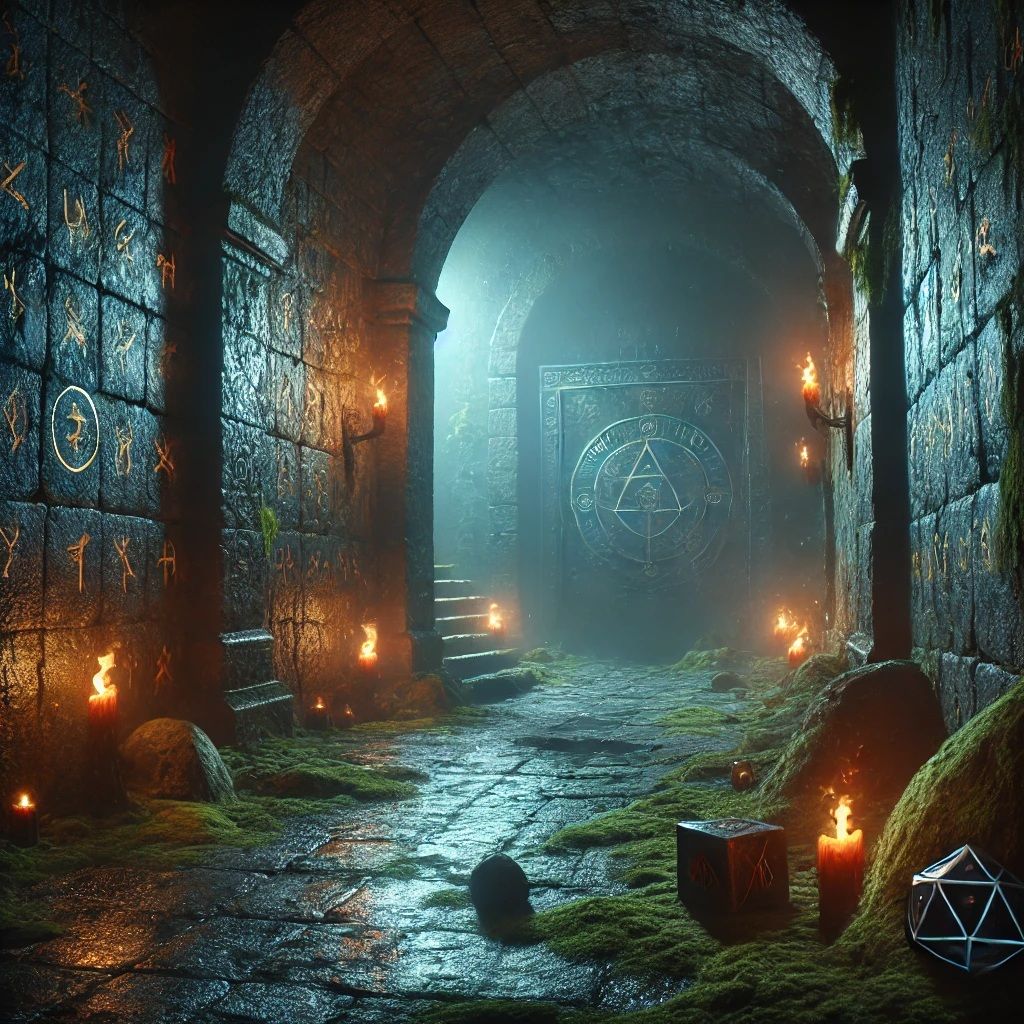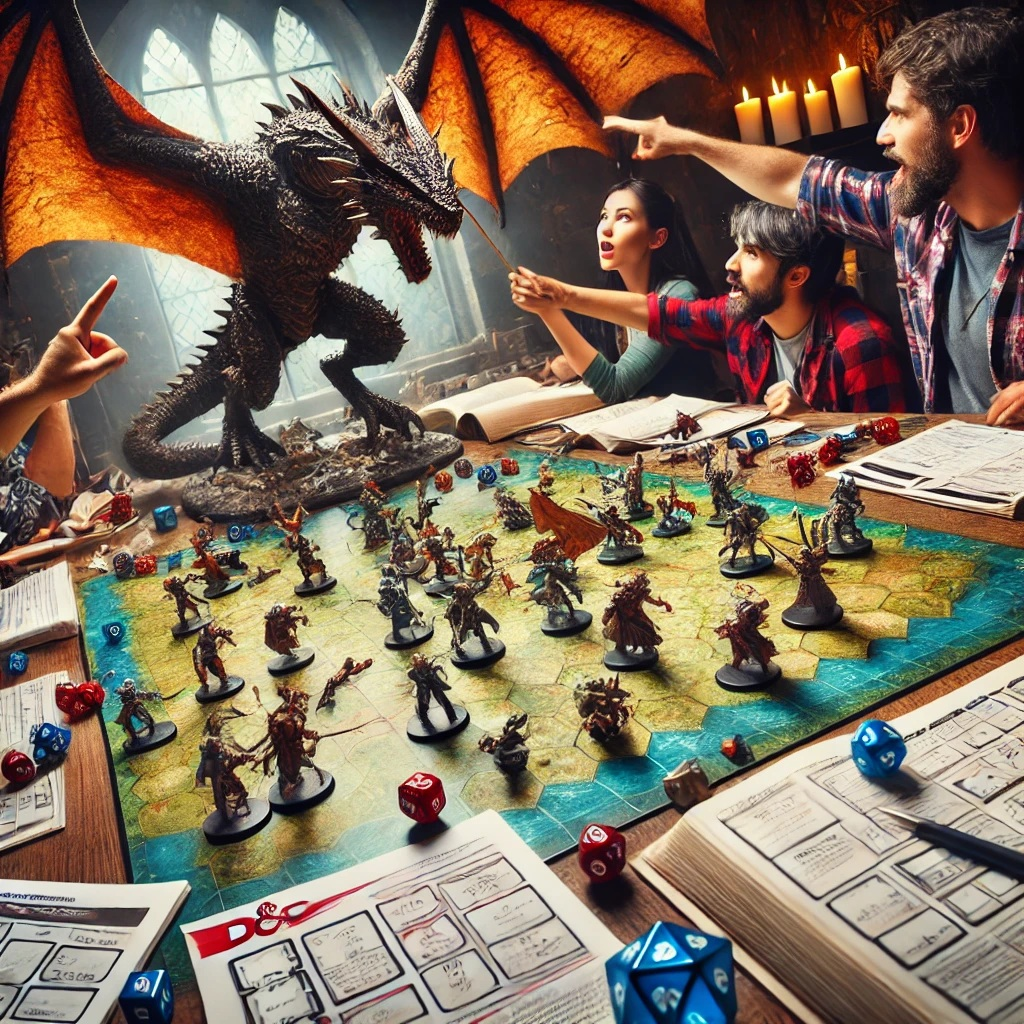Incorporating Technology and Sci-Fi Elements into Fantasy Settings
Well, they are usually categorized together, but mixing them?

Dear Readers,
Blending science fiction and technology into a traditional fantasy setting can breathe new life into your Dungeons & Dragons campaigns. Whether you’re introducing ancient alien artifacts, arcane-powered mechs, or a full-on collision between magic and machines, the fusion of sci-fi and fantasy opens up endless creative possibilities. This guide will help you incorporate these elements into your game while maintaining balance and immersion.
The Appeal of Sci-Fi in Fantasy
At first glance, science fiction and fantasy might seem like opposites. However, they share a core trait: both explore the unknown and push the limits of imagination. By integrating sci-fi elements into a fantasy world, you can create fresh storytelling opportunities, unexpected challenges, and unique character arcs. Some benefits include:
- New Storytelling Angles: Introduce mysterious ancient technology, time travel, or interdimensional beings.
- Unusual Enemies & Factions: Rogue AI, cyborg necromancers, or alien overlords.
- Expanded Magic Systems: Arcane-powered devices, bio-enhanced spellcasters, or hybrid tech-magic items.
- Diverse Environments: Floating space citadels, lost underground laboratories, or abandoned starships.
Setting the Stage: Levels of Sci-Fi Integration
Before adding sci-fi to your setting, decide how deeply you want to weave it into the world:
1. Minimal (Mystical Relics & Lost Technology)
In a classic fantasy setting, strange technology might exist as rare artifacts from an ancient, forgotten age. These could include:
- Energy Blades: Swords powered by arcane crystals or solar energy.
- Golems with AI-like Minds: A magically constructed being with self-learning capabilities.
- Lost Spacecraft: A derelict ship mistaken for a divine temple.
2. Moderate (Steampunk & Magitech)
Here, technology actively interacts with society but remains entwined with magic rather than replacing it. Examples:
- Magical Rail Systems: Cities connected by enchanted trains.
- Clockwork Soldiers: Golems mass-produced for war.
- Ether-Powered Firearms: Magical energy-based weaponry.
3. Heavy (Full Sci-Fi Integration)
In a full sci-fi-fantasy hybrid, technology is commonplace alongside magic. Possibilities include:
- Planetary Exploration: Heroes traveling between worlds.
- Cybernetic Spellcasters: Wizards enhanced with nano-magic implants.
- Intergalactic Conflicts: Spacefaring empires clashing with medieval kingdoms.
Implementing Sci-Fi Elements in Your Game
1. Adapting Magic Systems
Magic and technology should coexist without making one obsolete. Consider:
- Runic Circuitry: Magic-powered machinery using enchanted runes.
- Spellfire Engines: Vehicles fueled by raw magical energy.
- Artificial Spellcasters: Constructed beings programmed to cast spells.
2. Introducing Sci-Fi Races & Factions
Adding sci-fi-inspired species or organizations can enhance worldbuilding. Ideas include:
- Alien Elves: An advanced race from another star system.
- Cybernetic Dwarves: Tinkerers who replaced their limbs with mechanized parts.
- The Chrono Council: A secretive group protecting the timeline from disruptions.
3. Technology in Combat
Balancing sci-fi technology with traditional weapons is key to maintaining fairness. Consider:
- Energy Shields: Defense mechanisms that block magic and projectiles.
- Arcane Firearms: Guns that require magical attunement.
- Robotic Opponents: Enemies immune to poison or charm effects but vulnerable to EMP-style spells.
4. Sci-Fi Themed Adventures
Blend traditional fantasy quests with sci-fi twists:
- The Starfall Prophecy: Investigate a meteorite that is actually a crashed spaceship.
- The Lost Labyrinth: A dungeon that is a malfunctioning AI-driven research station.
- The Rift War: A battle against interdimensional invaders.
5. Managing Player Expectations
Not every group will be on board with sci-fi elements. Before introducing them:
- Discuss Themes: Ensure players are open to technological additions.
- Introduce Gradually: Start with minor elements and build up.
- Keep It Balanced: Make sure magic remains relevant alongside technology.
Conclusion
Combining sci-fi and technology with a fantasy setting can create a truly unique D&D experience. Whether you add subtle magitech elements or go full space-faring fantasy, the key is to keep things balanced and immersive. Experiment, have fun, and explore the endless possibilities of a world where magic and machines collide.
Until next time, Dear Readers...
























